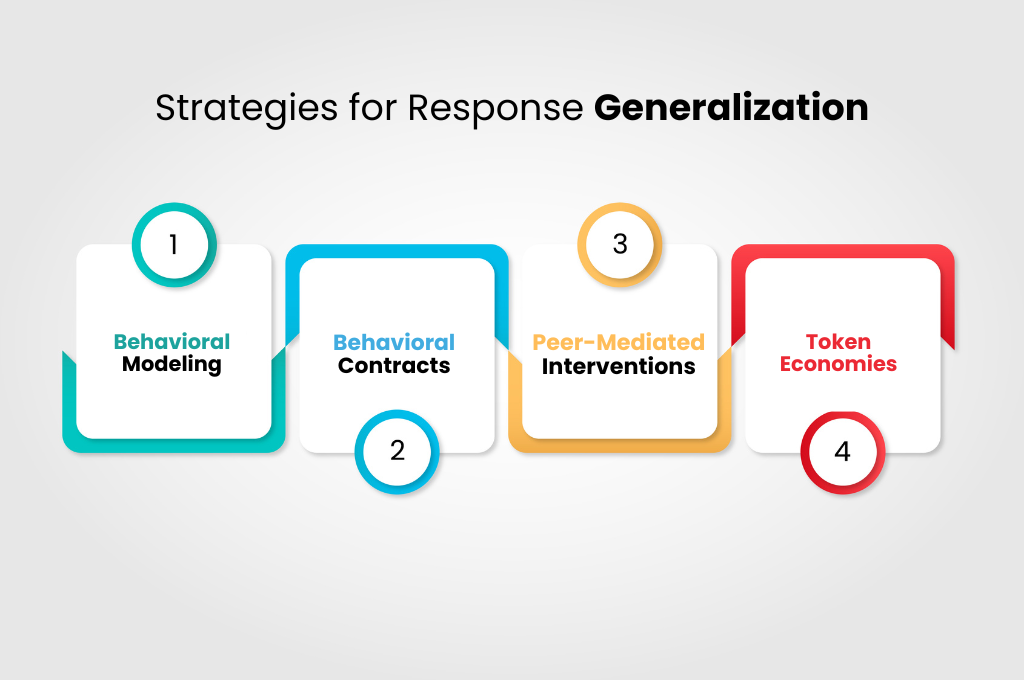Breaking Down Barriers: Exploring What Is Generalization in ABA
ABA TherapyJuly 17, 2025

Understanding Generalization in ABA
In the world of Applied Behavior Analysis (ABA) therapy, generalization is like the unsung hero for helping kids with autism make real-world progress. It's all about taking skills learned in therapy and using them in everyday life, even in places where therapists aren't hanging around every corner.
Definition and Importance
So, what’s generalization all about? Well, it means taking the tricks and skills mastered in therapy and applying them to totally different situations. Think of it as a superpower that helps folks use their know-how in varied situations, making them more independent and adaptable. The big win? Helping those with autism feel cool, calm, and collected in all sorts of scenarios.
Types of Generalization
When it comes to ABA therapy, there are two big types of generalization you need to know:
- Stimulus Generalization: Imagine being able to spot and react to things that aren’t exactly the same as what you've seen before. This means taking what was learned and handling slightly different situations, expanding those go-to reactions. Curious? You can dig into more at Stimulus Generalization Definition.
- Response Generalization: Now, here's where it gets really interesting: using learned skills in new or similar-looking situations. It's about adaptability—kind of like showing off your skills in new ways. For more tricks on this, check out Strategies for Response Generalization.
Embracing generalization while providing ABA therapy services is key. It ensures that the strides made by kids with autism aren't just boxed into therapy sessions—they overflow into their everyday lives. This makes life better and helps them fit into social circles. By working together and planning out interventions smartly, we can make sure these learned behaviors stick, no matter where life takes these kiddos.
Stimulus Generalization in ABA
Applied Behavior Analysis (ABA) has this nifty trick called stimulus generalization. You know that skill someone just picked up? Well, with stimulus generalization, they aren’t just keeping it in one box—they’re taking it to-go, ready to whip it out when life throws them curveballs. This really helps everyone, especially folks with autism, to flex their abilities outside of that initial learning bubble. Suddenly, classrooms turn into real-world practice arenas.
Stimulus Generalization Definition
So what’s the deal with stimulus generalization? It’s like teaching a dog to sit when you say “sit,” and then one day, they plop their tush down when you say “chair.” The magic happens when a response conditioned by one cue—think of it as peanuts—translates to another, somewhat similar cue—like a bowl of cashews (Parenting For Brain). This shows how smart our brains are at transferring knowledge from one situation to another.
Encouraging Stimulus Generalization
To make stimulus generalization happen on purpose, a few street-smart strategies come into play. Teaching doesn’t have to be a cookie-cutter affair; mix it up! Throw different scenarios and times into the teaching mix. Use all sorts of materials, and before you know it, individuals learn to rock their skills in all kinds of settings (Master ABA).
Boosting how people demonstrate their skills in varied contexts makes for all-around adaptability. This isn’t just about showing off in therapy but gaining real-world chops, too. It helps folks become a bit more independent and ready for whatever life tosses their way, whether it’s a bustling market, a new school, or just discovering a different way home.
Response Generalization in ABA
Response Generalization Definition
Response generalization in the world of Applied Behavior Analysis (ABA) is like when a kid can do different but related actions after learning something new, all thanks to the same 'trigger.' Imagine a kid learning to say 'hello'—suddenly, they're saying 'hi,' 'hey,' and waving, all kicked off by that one lesson. It's like watching skills hop, skip, and jump into different playgrounds of life (Nevada Autism Center).
Strategies for Response Generalization

ABA therapy sessions use some nifty tricks to help get those learned behaviors out of the therapy room and into the wilds of everyday life. The goal is to help a person turn those practice drills into meaningful, real-world action:
- Behavioral Modeling: Here, you'll see role play in action. An ABA therapist might act out a scene just right, to show clearly what’s expected. Then, the learner is encouraged to mimic and take the act to other stages of their daily world.
- Behavioral Contracts: Think of these as an agreement with goodies attached. They set up the rules and rewards of the game for showing good behavior, sort of like a treasure map guiding behaviors across different scenarios (Brighter Strides ABA).
- Peer-Mediated Interventions: Mixing it up with peers is not just child's play. It creates a mini lab for social skills—practicing the fine art of making friends and keeping social harmony in place.
- Token Economies: More than just currency in your pocket, tokens work as golden stars. You earn them for showing off those learned behaviors, helping to take the lesson out of the classroom and right into real-life situations.
When you rope in these strategies, you set the stage for ABA pros to help in expanding skill sets into everyday scenes. It's like handing folks a toolkit to open up real-world independence, turning learning into living, and showing how lessons learned in guidance can shape a brighter, more understanding world for all.
Skill Maintenance in ABA
Making sure someone doesn't forget a skill they've learned isn't just part of Applied Behavior Analysis (ABA) therapy—it's at the heart of it. Skill maintenance means sticking with those mastered skills long enough so they stick around. It's kind of like being able to tie your shoelaces. Once you've nailed it, the goal is to do it anywhere, anytime—without needing a reminder every single step of the way. It's about getting those skills to show up wherever life takes you.
Why Keeping Skills Matters
Keeping skills fresh is super important in ABA therapy. It lets folks keep flexing their independence muscle, whether it’s big tasks like getting dressed or simple daily chores. Holding onto these skills doesn’t just mean less frustration; it ups the quality of life and helps folks take charge, leading to smoother sailing as they tackle different life situations.
Tips for Keeping Skills
A huge part of keeping up those skills is practicing them in all sorts of settings. It's all about taking what you've learned and trying it out in different situations—the more variety, the better. This way, skills become second nature, always ready to jump in when needed.
Working together as a team makes a big difference, too. Bringing together behavior pros and specialists in autism means creating plans that fit the person’s needs just right. This team effort looks at the individual’s abilities and challenges, which when done right, leads to skill upkeep that's solid and lasting.
In the end, holding onto skills in ABA isn’t just about keeping what's learned; it's about setting up for success. As ABA pros push practice and an all-around approach through diverse settings and teamwork, individuals can keep their skills sharp and grow even more independent.
Read About: Can High-Functioning Autism Present as Nonverbal?


